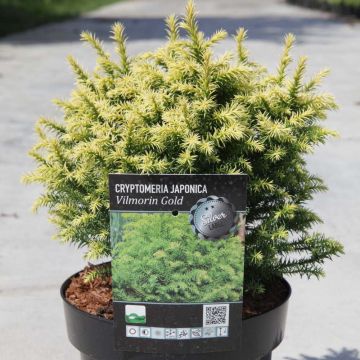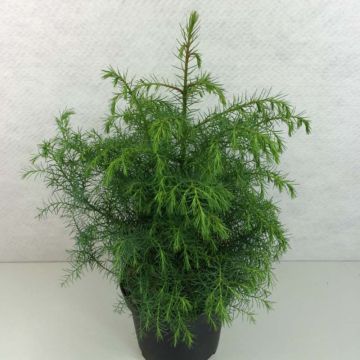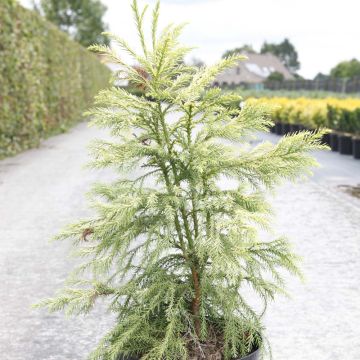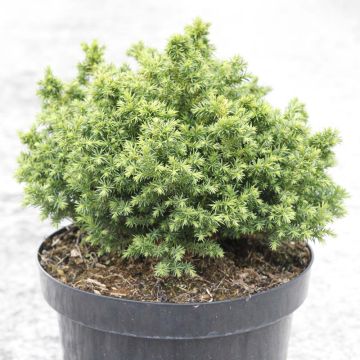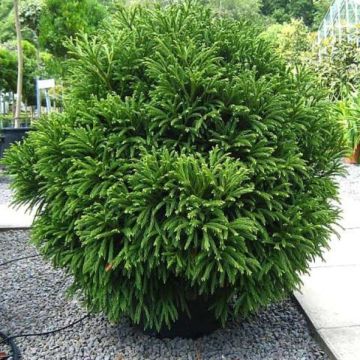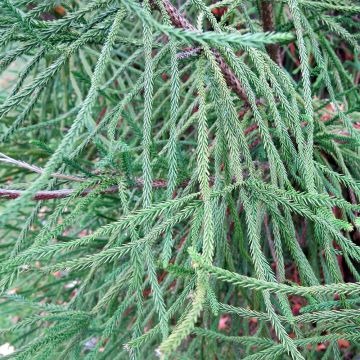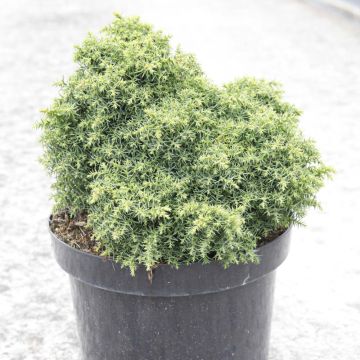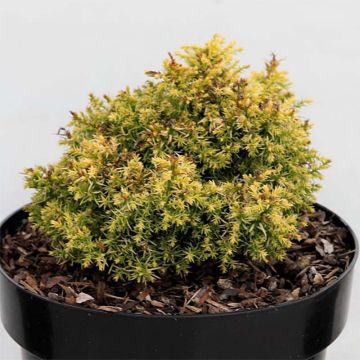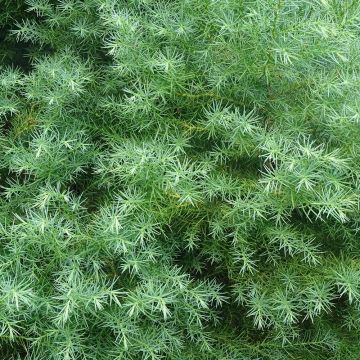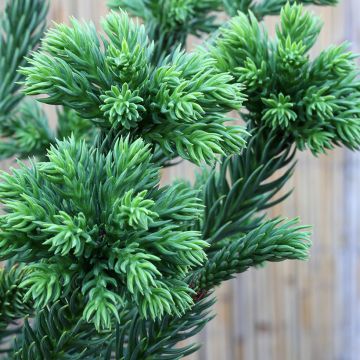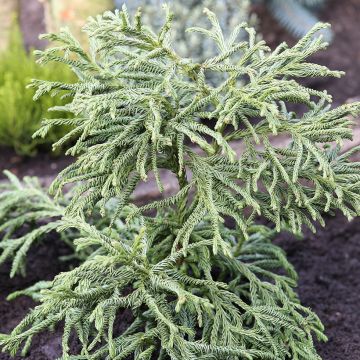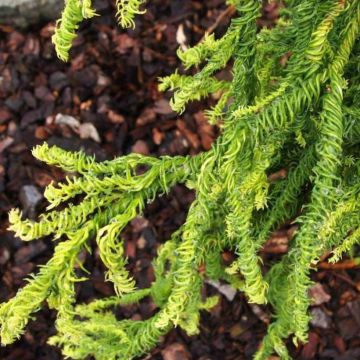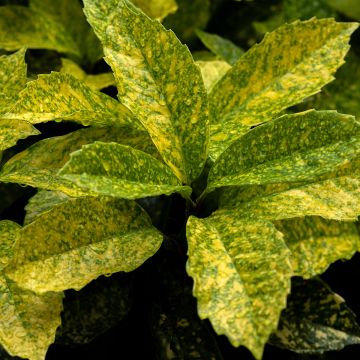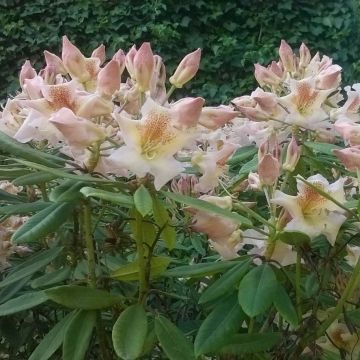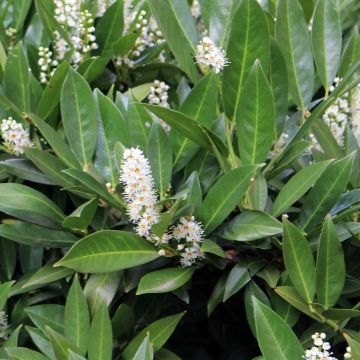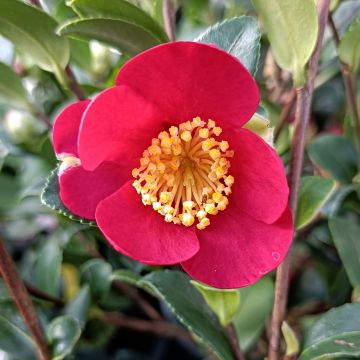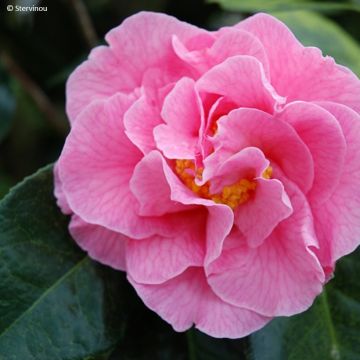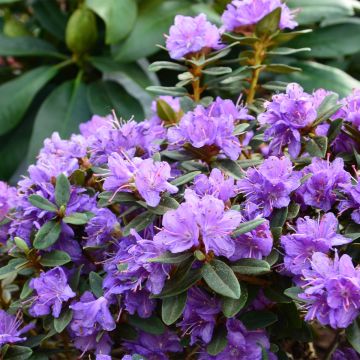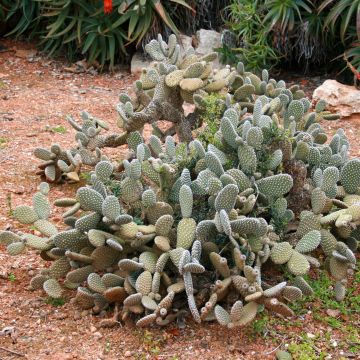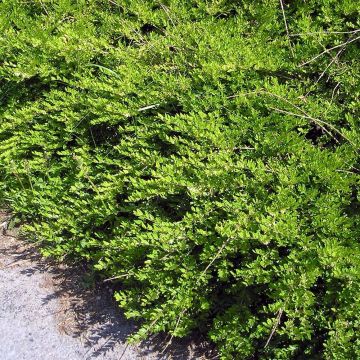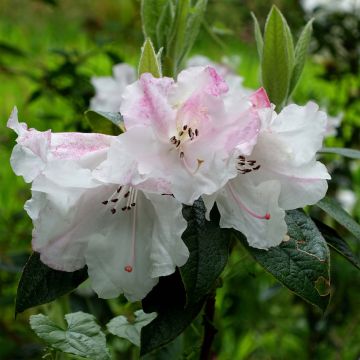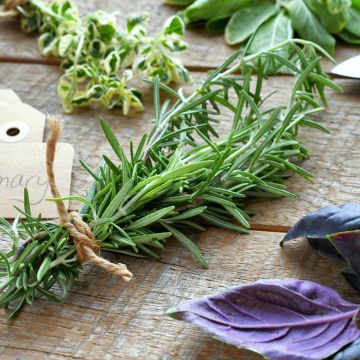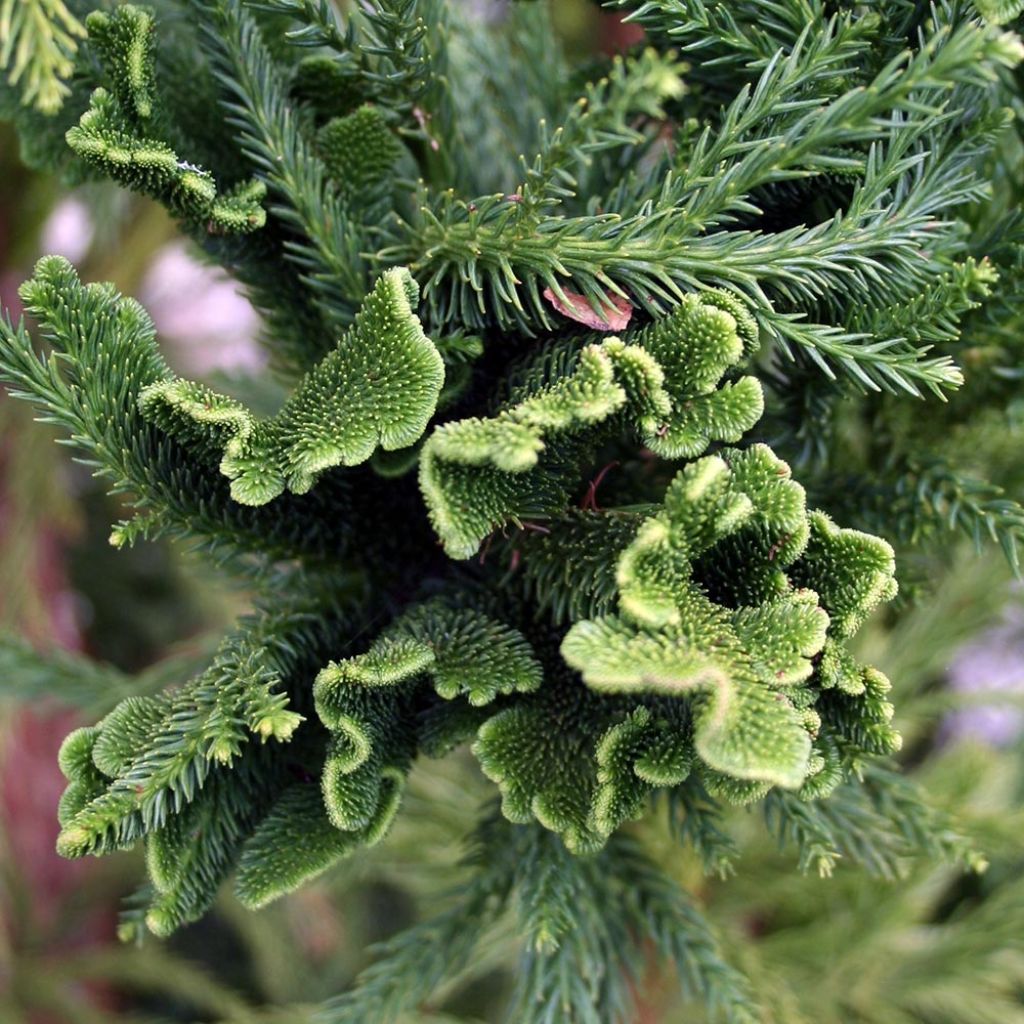

Cryptomeria japonica Cristata
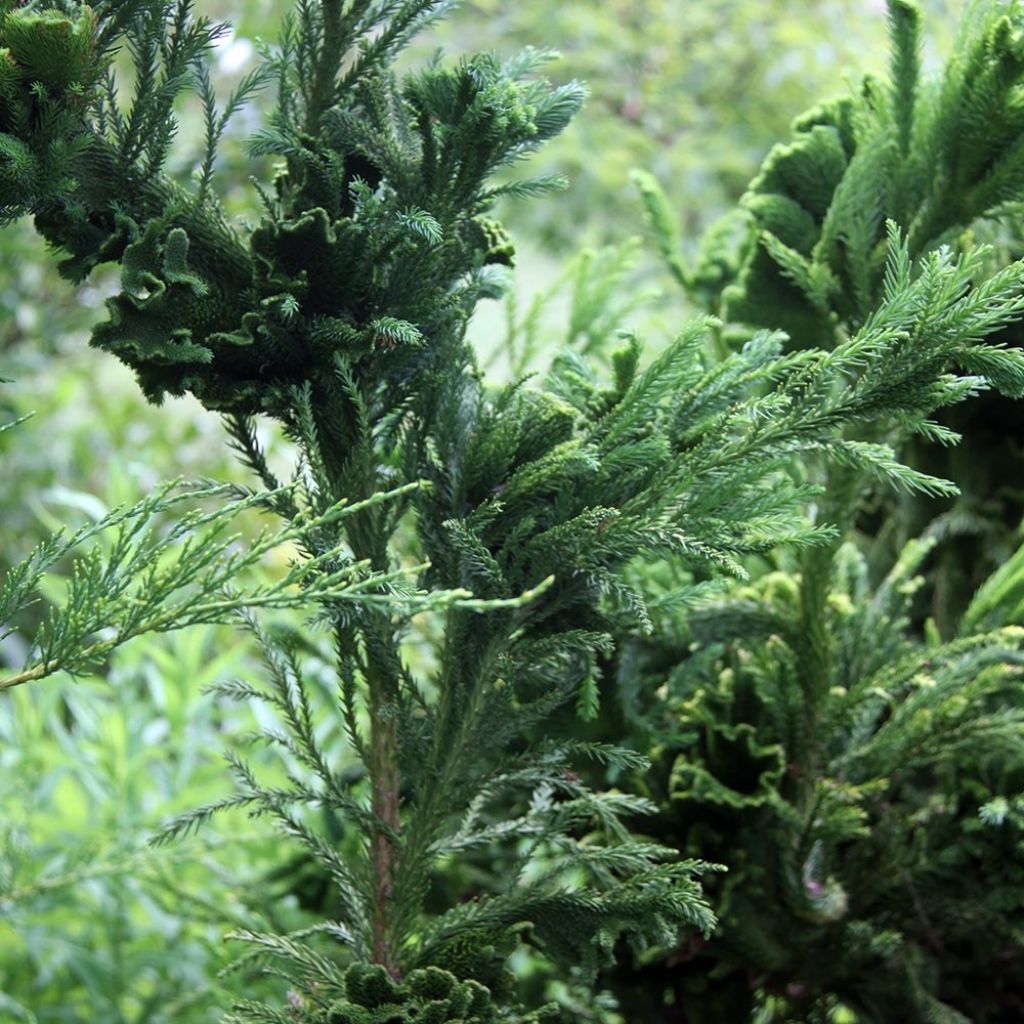

Cryptomeria japonica Cristata
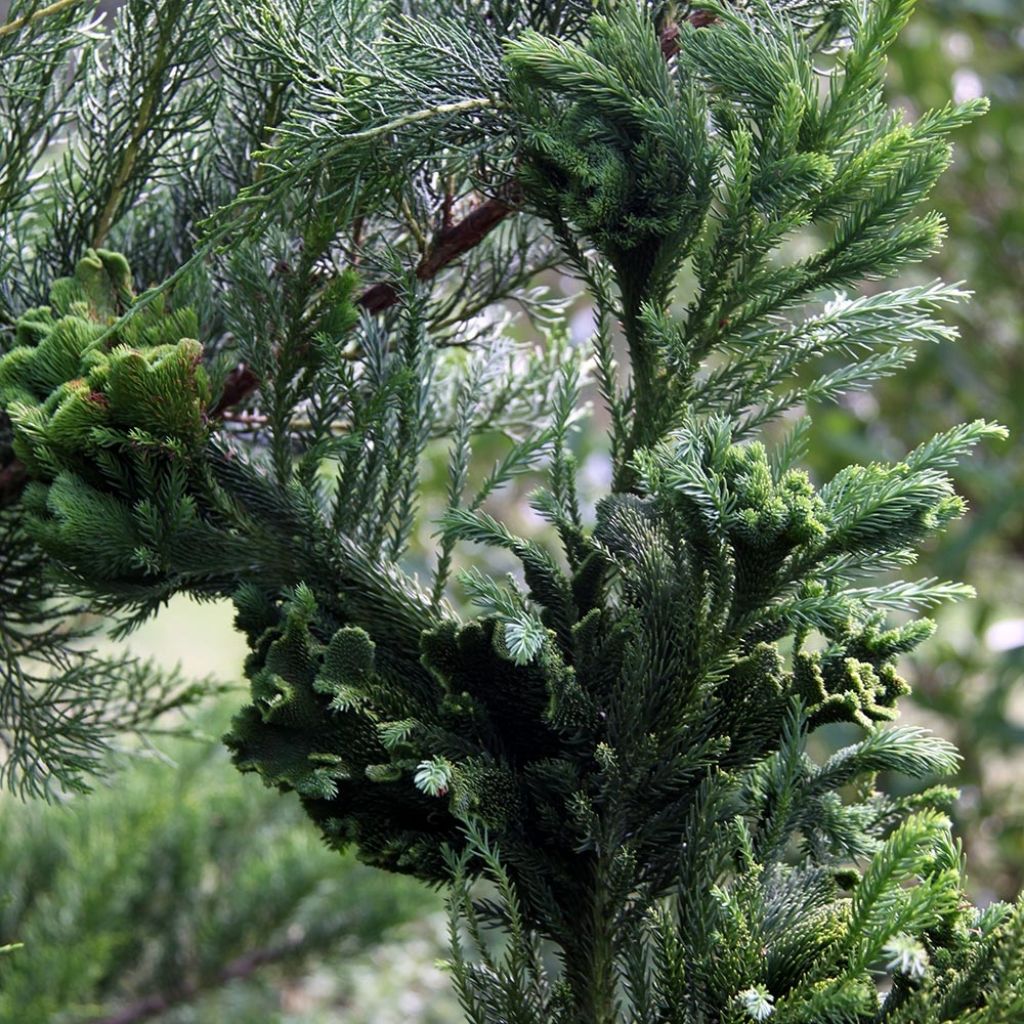

Cryptomeria japonica Cristata
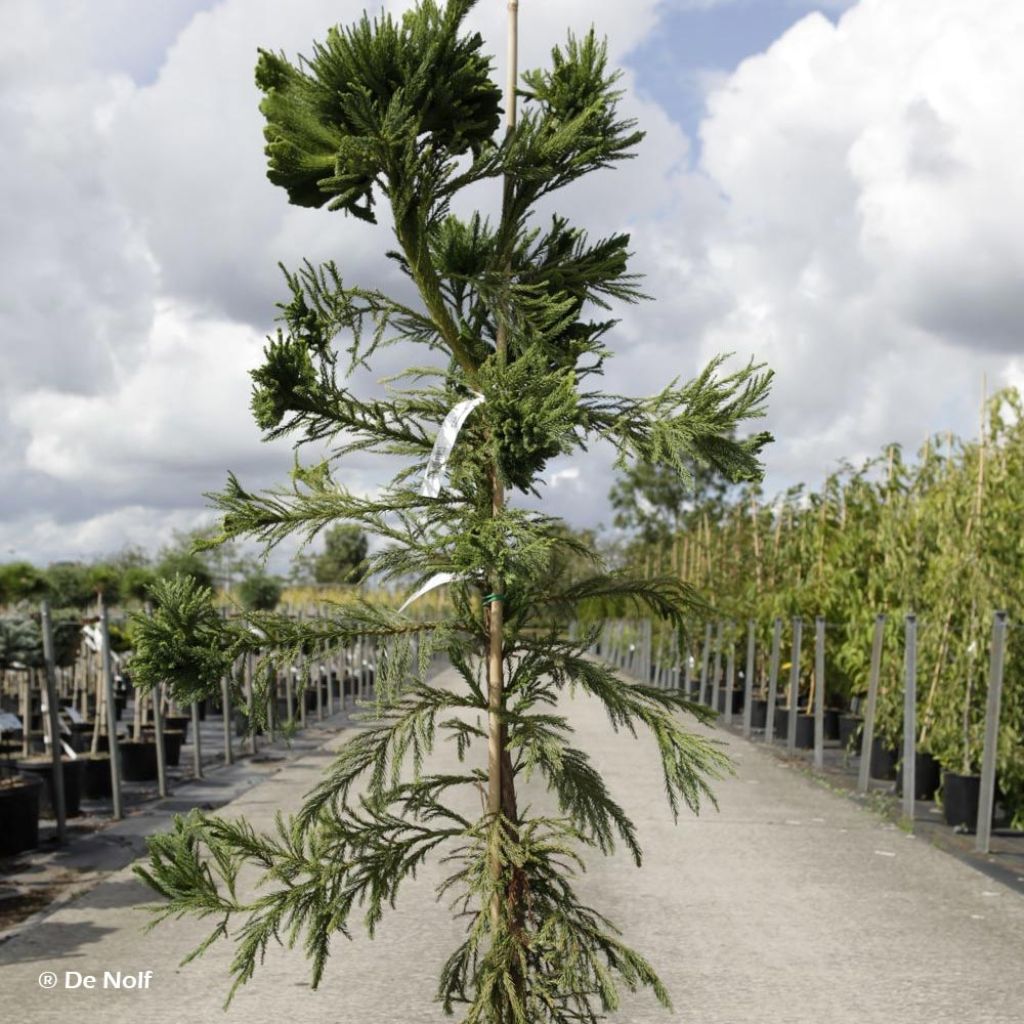

Cryptomeria japonica Cristata
Cryptomeria japonica Cristata
Cryptomeria japonica Cristata
Japanese Cedar, Sugi, Japanese Redwood
Why not try an alternative variety in stock?
View all →This plant carries a 24 months recovery warranty
More information
We guarantee the quality of our plants for a full growing cycle, and will replace at our expense any plant that fails to recover under normal climatic and planting conditions.
Oversize package: home delivery by special carrier from €6.90 per order..
Express home delivery from €8.90.
Does this plant fit my garden?
Set up your Plantfit profile →
Description
The Cryptomeria japonica 'Cristata' is a variety of Japanese cedar that will appeal to plant enthusiasts. Forming a beautiful slender pyramid, with a more twisted appearance as it ages, this conifer has a whimsical architecture, adorned with fans at the ends of its branches. Original and elegant, this Cryptomeria deserves a prominent spot, isolated in the middle of a lawn in a spacious garden. It thrives in well-drained, preferably moist and not excessively calcareous soil.
The Cryptomeria japonica is a very large conifer from the taxodiaceae family native to Japan. In its country of origin, this tree is commonly planted around religious temples. It is a species that thrives in mild oceanic climates with year-round humidity and mild winters. In Asia, this sequoia-like forest tree can reach heights of up to 60 m (196 ft 11 in), with a trunk diameter of 4 m (13 ft 1 in) covered in reddish-brown bark that peels off in vertical strips. In our latitudes, it still reaches heights of 30 to 40 m (98 ft 5 in to 131 ft 2 in). The foliage is evergreen. It consists of curved needles arranged in spirals around the twigs. The Japanese cedar has given rise to numerous cultivars selected for their compact growth, foliage appearance, original habit, resistance to cold, and better tolerance of our soil types and average climates.
The cultivar 'Cristata' was selected in Japan before 1900. It is a peculiar form of Cryptomeria japonica with a crested growth as some young shoots fuse into cock crest-like shapes. This characteristic is due to the phenomenon of cristation, which is quite common in plants but poorly understood: in affected species, tissue development occurs horizontally, resulting in crest-shaped stems. The tree grows rather fast in its early years and will reach a height of about 11-12 m (36 ft 1 in-39 ft 5 in) with a spread of 5 m (16 ft 5 in) after many years. Young specimens have a narrower habit, which broadens over time. The trunk is thin, straight, and extends to the top of the tree, with a reddish-brown wood. The curved needles form 5 spirals around each twig. The foliage is delicate, ranging from a beautiful tender green to a deeper shade in summer, glaucous in winter, and covers many slightly trailing branchlets. This variety is hardy down to -15°C (5 °F) once mature, but young plants are susceptible to severe frosts. It requires a sheltered location from cold and dry winds, as well as avoiding excessive exposure to direct sunlight.
If the Cryptomeria japonica Cristata thrives in your garden, it will arouse the curiosity of all your visitors. It is a beautiful specimen that deserves to be showcased. You could place a few trailing conifers at its base (such as Juniperus horizontalis Blue Chip or J.squamata Blue Carpet), a carpet of periwinkles, or even some snowdrops, for example. This conifer will adapt to climates that are not too harsh or dry.
Uses/Properties:
The wood of the Japanese Cedar is pleasantly fragrant, with a beautiful reddish-pink color, lightweight yet resistant, and resistant to decay. It is widely used in Japan for various types of construction, both outdoors and indoors.
Report an error about the product description
Cryptomeria japonica Cristata in pictures
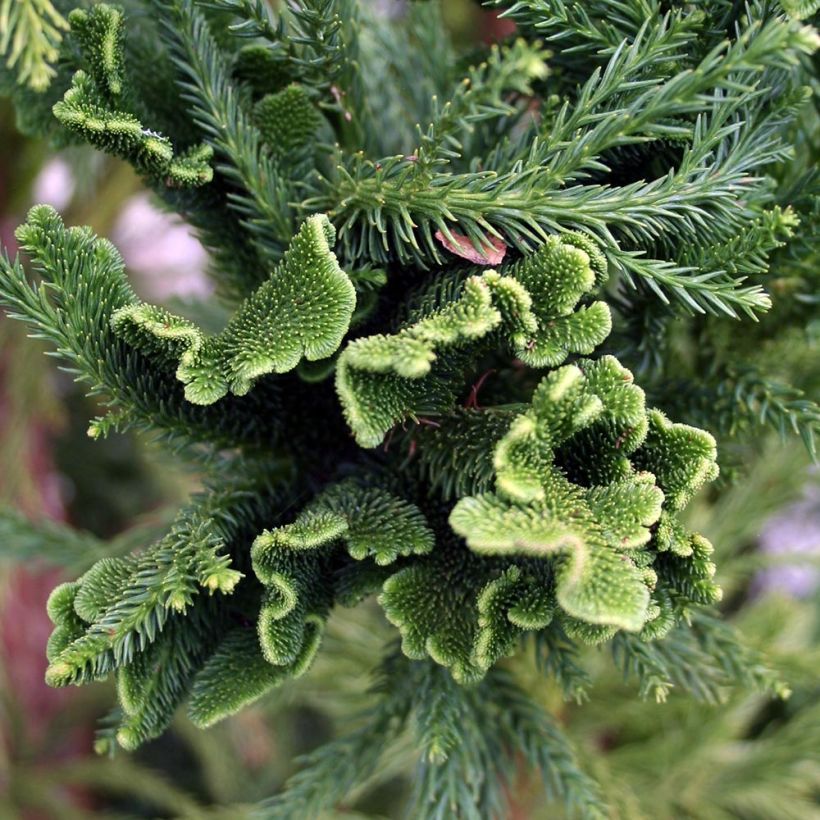

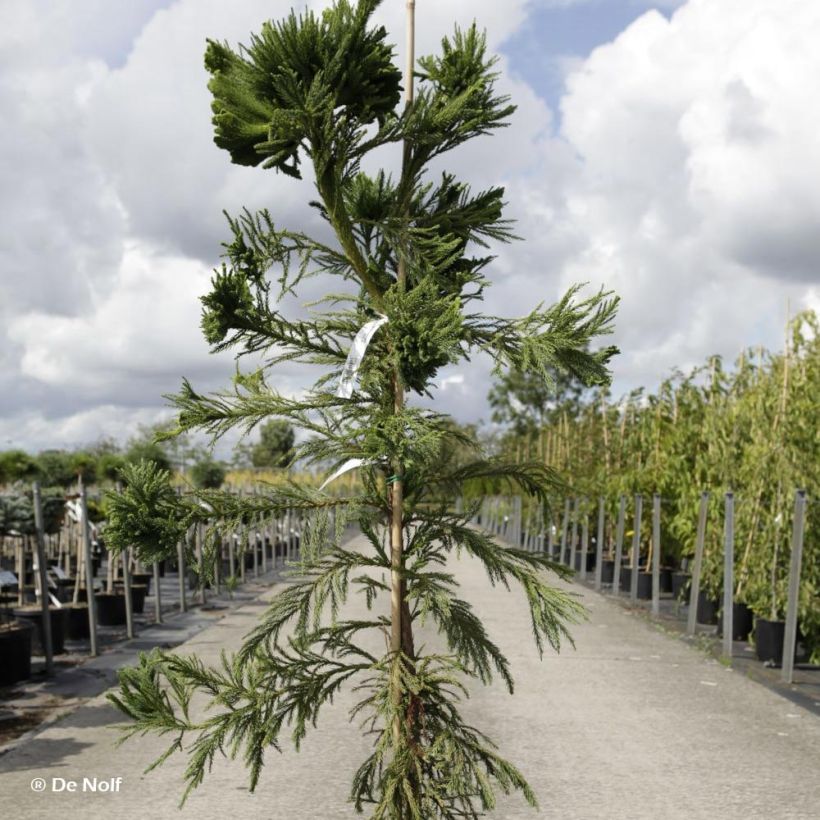

Plant habit
Foliage
Safety measures
Botanical data
Cryptomeria
japonica
Cristata
Taxodiaceae (cupressaceae)
Japanese Cedar, Sugi, Japanese Redwood
Cultivar or hybrid
atteinterespiratoire
Cette plante peut entraîner des symptômes allergiques.
Evitez de la planter si vous ou vos proches souffrez de rhinite saisonnière ("rhume des foins").
Davantage d'informations sur https://plantes-risque.info
Other Cryptomeria
Planting and care
The Cryptomeria japonica should be planted from September to November and from February to June in ordinary, well-drained soil, preferably moist, rather fertile, even slightly calcareous, neutral or acidic. It fears excessively dry and/or calcareous or too shallow soils. Choose a semi-shaded location, especially in very sunny regions. This variety fears dry and cold winds that scorch its young shoots. The weight of the snow can break certain branches. Soak the root balls well before planting. Add organic amendment at planting and water generously in the first years, and in case of prolonged drought. Apply a special conifer fertilizer every year in April and cultivate the soil in summer. This conifer is hardy up to -15°C (5 °F). Pruning is not necessary, but it tolerates light pruning well.
Planting period
Intended location
Care
This item has not been reviewed yet - be the first to leave a review about it.
Evergreen shrubs
Haven't found what you were looking for?
Hardiness is the lowest winter temperature a plant can endure without suffering serious damage or even dying. However, hardiness is affected by location (a sheltered area, such as a patio), protection (winter cover) and soil type (hardiness is improved by well-drained soil).

Photo Sharing Terms & Conditions
In order to encourage gardeners to interact and share their experiences, Promesse de fleurs offers various media enabling content to be uploaded onto its Site - in particular via the ‘Photo sharing’ module.
The User agrees to refrain from:
- Posting any content that is illegal, prejudicial, insulting, racist, inciteful to hatred, revisionist, contrary to public decency, that infringes on privacy or on the privacy rights of third parties, in particular the publicity rights of persons and goods, intellectual property rights, or the right to privacy.
- Submitting content on behalf of a third party;
- Impersonate the identity of a third party and/or publish any personal information about a third party;
In general, the User undertakes to refrain from any unethical behaviour.
All Content (in particular text, comments, files, images, photos, videos, creative works, etc.), which may be subject to property or intellectual property rights, image or other private rights, shall remain the property of the User, subject to the limited rights granted by the terms of the licence granted by Promesse de fleurs as stated below. Users are at liberty to publish or not to publish such Content on the Site, notably via the ‘Photo Sharing’ facility, and accept that this Content shall be made public and freely accessible, notably on the Internet.
Users further acknowledge, undertake to have ,and guarantee that they hold all necessary rights and permissions to publish such material on the Site, in particular with regard to the legislation in force pertaining to any privacy, property, intellectual property, image, or contractual rights, or rights of any other nature. By publishing such Content on the Site, Users acknowledge accepting full liability as publishers of the Content within the meaning of the law, and grant Promesse de fleurs, free of charge, an inclusive, worldwide licence for the said Content for the entire duration of its publication, including all reproduction, representation, up/downloading, displaying, performing, transmission, and storage rights.
Users also grant permission for their name to be linked to the Content and accept that this link may not always be made available.
By engaging in posting material, Users consent to their Content becoming automatically accessible on the Internet, in particular on other sites and/or blogs and/or web pages of the Promesse de fleurs site, including in particular social pages and the Promesse de fleurs catalogue.
Users may secure the removal of entrusted content free of charge by issuing a simple request via our contact form.
The flowering period indicated on our website applies to countries and regions located in USDA zone 8 (France, the United Kingdom, Ireland, the Netherlands, etc.)
It will vary according to where you live:
- In zones 9 to 10 (Italy, Spain, Greece, etc.), flowering will occur about 2 to 4 weeks earlier.
- In zones 6 to 7 (Germany, Poland, Slovenia, and lower mountainous regions), flowering will be delayed by 2 to 3 weeks.
- In zone 5 (Central Europe, Scandinavia), blooming will be delayed by 3 to 5 weeks.
In temperate climates, pruning of spring-flowering shrubs (forsythia, spireas, etc.) should be done just after flowering.
Pruning of summer-flowering shrubs (Indian Lilac, Perovskia, etc.) can be done in winter or spring.
In cold regions as well as with frost-sensitive plants, avoid pruning too early when severe frosts may still occur.
The planting period indicated on our website applies to countries and regions located in USDA zone 8 (France, United Kingdom, Ireland, Netherlands).
It will vary according to where you live:
- In Mediterranean zones (Marseille, Madrid, Milan, etc.), autumn and winter are the best planting periods.
- In continental zones (Strasbourg, Munich, Vienna, etc.), delay planting by 2 to 3 weeks in spring and bring it forward by 2 to 4 weeks in autumn.
- In mountainous regions (the Alps, Pyrenees, Carpathians, etc.), it is best to plant in late spring (May-June) or late summer (August-September).
The harvesting period indicated on our website applies to countries and regions in USDA zone 8 (France, England, Ireland, the Netherlands).
In colder areas (Scandinavia, Poland, Austria...) fruit and vegetable harvests are likely to be delayed by 3-4 weeks.
In warmer areas (Italy, Spain, Greece, etc.), harvesting will probably take place earlier, depending on weather conditions.
The sowing periods indicated on our website apply to countries and regions within USDA Zone 8 (France, UK, Ireland, Netherlands).
In colder areas (Scandinavia, Poland, Austria...), delay any outdoor sowing by 3-4 weeks, or sow under glass.
In warmer climes (Italy, Spain, Greece, etc.), bring outdoor sowing forward by a few weeks.

































